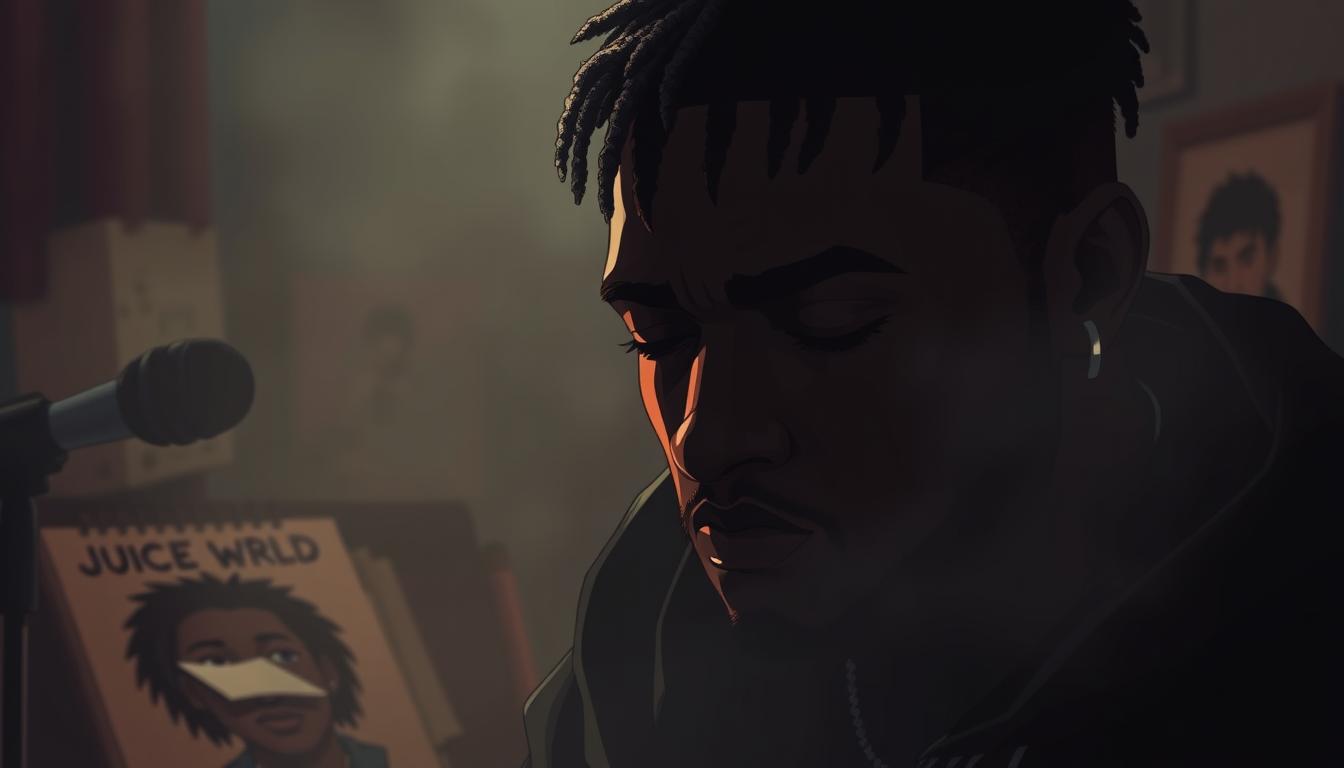In 2019, the world lost a rising star whose music touched millions. At just 21 years old, he had already become a generational talent, amassing billions of streams and topping charts. Yet, behind the scenes, he was battling a personal demon—addiction.
His lyrics often spoke openly about mental health struggles, offering a raw and honest glimpse into his mind. But in real life, his fight with substance abuse was far more intense. This paradox made his story both compelling and heartbreaking.
Despite his untimely death, his legacy continues to grow. Posthumously, he achieved two #1 albums, proving his lasting impact on the music industry. His final days, marked by birthday celebrations and a tragic airport seizure, remain a poignant reminder of the struggles many face.
The HBO documentary Into the Abyss sheds new light on his life, offering a deeper understanding of his battles. This article re-examines his legacy, focusing on the importance of mental health advocacy and the lessons we can learn from his story.
Who Was Juice Wrld?
Chicago’s south suburbs were the birthplace of a young talent who would later redefine modern rap. Born Jarad Anthony Higgins on December 2, 1998, his journey from a band kid to a SoundCloud sensation is a story of passion, creativity, and resilience.
Early Life and Musical Beginnings
Jarad’s family life was marked by his parents’ divorce when he was just three years old. Raised by his mother, Carmela Wallace, he found solace in music from an early age. By six, he was already playing the piano, percussion, and guitar—a true prodigy in the making.
In high school, Jarad was known as the band kid, but his interests soon shifted. He began experimenting with recording songs on his cell phone, creating the persona «JuicetheKidd.» This marked the beginning of his transformation into the artist the world would come to know.
Rise to Fame on SoundCloud
Jarad’s DIY hustle led him to record tracks in friends’ basements with teen producers like DT and Nick Mira. His breakout EP, «999,» released during his senior year of high school, showcased his unique blend of rap and emotional depth. The number 999, a flipped version of 666, became a symbol of turning struggles into strength.
His mother, Carmela, once shared, «I wanted him in band for college opportunities—but he chose his own path.» That path led to the viral success of «All Girls Are the Same,» a track that catapulted him into the spotlight and solidified his name in the music industry.
| Milestone | Details |
|---|---|
| Birth | December 2, 1998, in Chicago’s south suburbs |
| Early Talent | Played piano, percussion, and guitar by age 6 |
| High School | Created «JuicetheKidd» persona, released EP «999» |
| Breakthrough | Viral success with «All Girls Are the Same» |
The Meteoric Rise of Juice Wrld
From SoundCloud to superstardom, his journey was nothing short of extraordinary. In just a few years, he went from recording tracks in friends’ basements to topping charts worldwide. His career was a testament to raw talent, hard work, and an uncanny ability to connect with listeners.
Breakthrough with «Lucid Dreams»
The track that changed everything was «Lucid Dreams.» Released in 2018, it peaked at #2 on the Billboard Hot 100 and amassed over 1.6 billion streams on Spotify. The song’s haunting melody, built around a sample from Sting’s «Shape of My Heart,» struck a chord with listeners. Benny Blanco, who worked with him, once said, «He’d create four hit songs over one beat in a session.»
What’s even more impressive? The entire recording process took just 20 minutes. This track not only showcased his lyrical prowess but also solidified his place in the music industry.
Signing with Interscope Records
At just 19 years old, he signed a $3 million deal with Interscope Records. This marked a turning point in his career. His ability to freestyle for over an hour on Tim Westwood’s show left fans and critics in awe. His sunny personality contrasted with his dark lyrics, earning him the nickname «a selfless Santa Claus» for his generosity toward friends.
Collaborations and Albums
His collaboration with Future on the album «WRLD ON DRUGS» debuted at #1 on the Billboard 200. The irony wasn’t lost on fans—Future, a mentor of lean culture, collaborated with someone battling addiction. His 2019 album, «Death Race for Love,» spent over five years on the Billboard 200, proving his lasting impact.
In the studio, he had a unique ritual: PlayStation breaks between recording eight songs a day. Cole Bennett, the director behind many of his videos, summed it up perfectly: «He went from SoundCloud to superstar in months—unheard of!»
| Milestone | Details |
|---|---|
| «Lucid Dreams» | Peaked at #2 on Billboard, 1.6B+ Spotify streams |
| Interscope Deal | $3M contract at 19 years old |
| Collaborations | «WRLD ON DRUGS» with Future debuted at #1 |
| Studio Ritual | PlayStation breaks between recording 8 songs/day |
Juice Wrld’s Struggles with Mental Health and Addiction

Behind the fame and success, there was a battle few truly understood. While his music brought joy to millions, his personal struggles with mental health and addiction were far more intense. This section delves into the signs, the cries for help, and the efforts to find healing.
Early Signs of Drug Use
His journey with substances began early. During his freshman year of school, he started experimenting with pills like Xanax and Percocet. What began as a way to cope with panic attacks soon spiraled into a deeper struggle. «He was just trying to find peace,» shared a close friend.
By the time he reached stardom, codeine and other substances became a part of his darker days. His lyrics in «Lean Wit Me» hinted at this battle: «Drugs got me sweatin‘ but the room gettin‘ colder.» It was a raw glimpse into his reality.
Lyrics Reflecting Inner Turmoil
His lyrics were more than just words—they were a cry for help. Songs like «Lean Wit Me» and «Legends» painted a vivid picture of his inner struggles. Lines like «Will I die tonight? I don’t know, is it over?» revealed the depth of his pain.
Studio engineer Max Lord once recalled an emotional intervention in Australia: «We confronted him in tears, begging him to get help.» Despite these moments, his music continued to resonate with fans who saw their own struggles in his words.
Attempts to Seek Help
His management team arranged 20-30 doctor visits, but the road to recovery was far from easy. A rehab stay was planned for December 22, 2019—just 14 days after his tragic overdose. His mother, Carmela Wallace, shared, «He wanted to normalize discussions about mental health in Black communities.»
Even amidst his struggles, he found solace in childhood hobbies like Yu-Gi-Oh! cards. It was a reminder of simpler times, free from the weight of addiction and depression.
| Key Events | Details |
|---|---|
| First Drug Use | Started Xanax/Percocet in high school |
| Lyrics as Cry for Help | «Lean Wit Me» and «Legends» reflected inner pain |
| Attempts to Seek Help | Planned rehab stay for December 22, 2019 |
| Cultural Advocacy | Wanted to normalize mental health discussions |
The Tragic Events of December 2019

December 2019 marked a tragic turn in the life of a young artist whose music resonated globally. What began as a birthday celebration ended in a heartbreaking tragedy, leaving fans and loved ones in shock.
Final Days and Birthday Celebration
On December 2, he turned 21, a milestone filled with joy and hope. Friends, including Kid LAROI, joined him for a paintball outing, a moment of normalcy amidst his rising fame. Reports suggest he was attempting to «get clean,» a testament to his ongoing battle with drugs.
The Seizure and Overdose
Six days later, a private jet from LA to Chicago carried 70 pounds of marijuana and six bottles of codeine. A Homeland Security search triggered panic, leading to a fatal chain of events. Midway Airport became the scene of a devastating seizure, during which Narcan was administered in a desperate attempt to save him.
The toxicology report revealed an accidental mix of oxycodone and codeine as the cause of death. His mother, Carmela Wallace, later shared, «I knew the cause before toxicology.» This raw honesty highlighted the pain of a parent who had watched her son struggle.
Aftermath and Legal Implications
The aftermath was marked by legal complexities. Three guns were found, leading to charges against security guards, but no major convictions were made. The cruel irony? He passed away at the same age as fellow artist Lil Peep, another talent lost too soon.
For more details on the Homeland Security search, visit our source. His story remains a poignant reminder of the fragility of life and the dangers of addiction.
Conclusion: Juice Wrld’s Legacy and Impact
His story is a testament to the power of music and the fragility of life. Even after his death, his influence continues to shape the industry, with posthumous albums like Legends Never Die and Fighting Demons topping charts. These works, all certified platinum, showcase his raw talent and emotional depth.
Beyond his music, his legacy lives on through the Live Free 999 Foundation. Launched in April 2020, the organization works to destigmatize teen addiction and promote mental health awareness. Fans often share how his songs saved their lives, with one saying, «His music stopped my suicide attempt.»
It’s bittersweet to see his success grow in the years since his passing. As Cole Bennett aptly put it, «He was just getting started.» His story reminds us of the importance of addressing health struggles and the lasting impact one voice can have.











